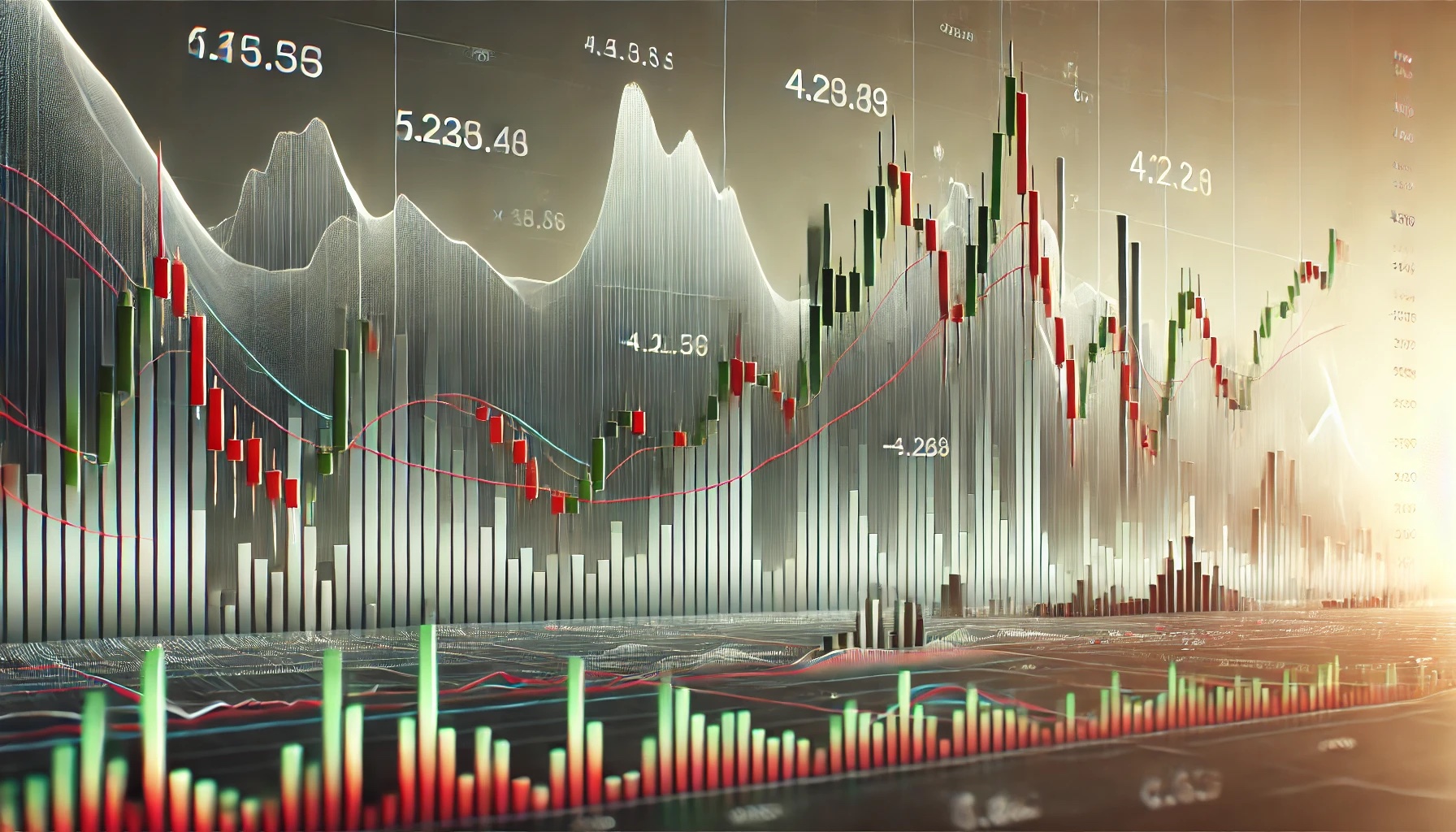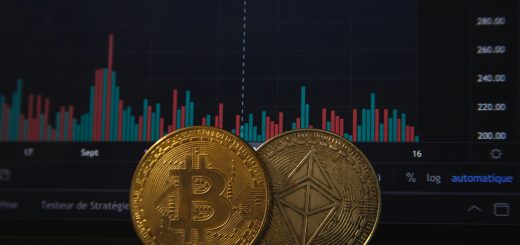Economic Trends and Market Movements: Navigating Autumn’s Financial Crossroads
As autumn settles across global financial markets, investors find themselves at a critical juncture where traditional economic indicators intersect with emerging paradigms of sustainable finance and environmental consciousness. This season has proven particularly pivotal for market participants, who are simultaneously navigating the complexities of inflation pressures, monetary policy adjustments, and corporate performance metrics while grappling with longer-term structural shifts toward sustainable investing practices.
The Inflation Conundrum: Persistent Pressures and Policy Responses
The specter of inflation continues to cast a long shadow over global economic landscapes, with policymakers and market participants closely monitoring a complex array of price indicators that reflect both cyclical and structural economic forces. Consumer price indices across major economies have shown varied patterns throughout the autumn season, creating divergent policy responses that have significant implications for investment strategies and market valuations.
Central banks worldwide have found themselves in the challenging position of balancing inflation control measures against the need to maintain economic growth and employment levels. The Federal Reserve’s approach to monetary policy has been particularly scrutinized, as markets parse every statement and data release for clues about future interest rate trajectories. The European Central Bank faces its own unique challenges, managing inflation concerns while addressing the diverse economic conditions across member nations.
Core inflation measures, which exclude volatile food and energy prices, have provided mixed signals about underlying price pressures in the economy. While some sectors have shown signs of cooling, others continue to experience persistent upward pressure that suggests inflation may be more entrenched than initially anticipated. This complexity has made it increasingly difficult for investors to predict future monetary policy actions with confidence.
The relationship between wage growth and inflation has become a particular focus for economic analysts, as labor market dynamics continue to evolve in response to demographic changes, technological advances, and shifting worker preferences. Higher wage demands in certain sectors have created inflationary pressures, while productivity improvements in others have helped moderate overall price increases.
Interest Rate Dynamics and Market Implications
The trajectory of interest rates remains one of the most closely watched aspects of the current economic environment, with implications that extend far beyond traditional fixed-income markets. The complex interplay between monetary policy decisions, market expectations, and economic fundamentals has created a volatile environment for interest-sensitive investments and borrowing costs.
Long-term interest rates have experienced significant volatility throughout the autumn season, reflecting uncertainty about future economic growth, inflation trends, and central bank policies. This volatility has had profound implications for various asset classes, with particular impact on real estate markets, utility stocks, and growth-oriented technology companies that are sensitive to changes in discount rates.
The yield curve dynamics have provided important insights into market expectations about future economic conditions. Periods of curve flattening or inversion have historically been associated with economic slowdowns, making current yield curve movements a subject of intense scrutiny among financial market participants.
Credit markets have shown varying degrees of stress as interest rate changes affect both the cost of borrowing and the creditworthiness of various market participants. Corporate bond spreads have fluctuated in response to changing risk perceptions, while municipal bond markets have faced their own unique challenges related to local government fiscal conditions and infrastructure investment needs.
The impact of changing interest rates on currency markets has added another layer of complexity to global investment strategies. Currency fluctuations driven by interest rate differentials have affected international trade flows, corporate earnings for multinational companies, and the attractiveness of various regional investment opportunities.
Corporate Earnings: Navigating Headwinds and Opportunities
The autumn earnings season has provided crucial insights into how companies are adapting to challenging economic conditions while positioning themselves for future growth opportunities. Corporate performance metrics have revealed a complex picture of resilience, adaptation, and strategic transformation across various industries and market segments.
Technology sector earnings have reflected the ongoing tension between artificial intelligence investment opportunities and concerns about demand normalization following the rapid growth of recent years. Companies in this sector have demonstrated varying abilities to maintain margin expansion while investing in next-generation technologies and managing increased competition for talent and resources.
Financial services companies have benefited from higher interest rate environments in some respects while facing challenges related to credit quality and loan demand. Regional banks have experienced particular pressure from commercial real estate exposures and deposit competition, while larger institutions have generally demonstrated more resilient performance metrics.
Consumer discretionary companies have provided valuable insights into changing consumer behavior patterns and spending priorities. The divergence between premium and value-oriented retailers has become more pronounced, reflecting broader economic inequality trends and shifting consumer preferences toward experiences versus material goods.
Energy sector performance has been influenced by complex supply and demand dynamics, geopolitical considerations, and ongoing transitions toward renewable energy sources. Traditional energy companies have focused on capital discipline and shareholder returns while selectively investing in transition technologies and sustainable business models.
Healthcare companies have continued to demonstrate relatively stable performance characteristics while navigating regulatory uncertainties, drug pricing pressures, and evolving treatment paradigms. The sector’s defensive characteristics have made it attractive to investors seeking stability amid broader market volatility.
Supply Chain Evolution and Strategic Adaptations
The transformation of global supply chains continues to reshape business strategies and investment patterns as companies seek to balance efficiency, resilience, and sustainability considerations. This evolution has created both challenges and opportunities for businesses across various industries while influencing broader economic trends and market movements.
Nearshoring and reshoring initiatives have gained momentum as companies reassess their supply chain strategies in light of geopolitical tensions, transportation costs, and risk management considerations. This trend has created investment opportunities in domestic manufacturing capabilities while potentially reducing some international trade dependencies.
Technology adoption across supply chain management has accelerated, with companies investing in artificial intelligence, automation, and data analytics to improve visibility, efficiency, and responsiveness. These investments have implications for productivity growth, employment patterns, and competitive advantages across industries.
Inventory management strategies have evolved significantly as companies seek to balance the costs of holding inventory against the risks of supply disruptions. Just-in-time manufacturing approaches have given way to more robust inventory buffers in critical areas, affecting working capital requirements and cash flow patterns.
The integration of sustainability considerations into supply chain decision-making has become increasingly important, with companies facing pressure from investors, regulators, and consumers to address environmental and social impacts throughout their value chains. This focus has created new cost structures and investment priorities while opening opportunities for companies that can provide sustainable solutions.
Energy Markets: Price Volatility and Transition Dynamics
Energy price fluctuations have emerged as a significant driver of both inflation trends and corporate cost structures, creating ripple effects throughout the global economy that extend far beyond traditional energy sector investments. The complex interplay between supply constraints, demand patterns, and transition toward renewable energy sources has created a particularly volatile and uncertain environment for energy markets.
Oil price movements have been influenced by production decisions from major oil-producing nations, changes in global demand patterns, and strategic petroleum reserve activities by consuming countries. These price fluctuations have had direct impacts on transportation costs, manufacturing expenses, and consumer spending patterns across the economy.
Natural gas markets have experienced extreme volatility due to supply disruptions, seasonal demand variations, and infrastructure constraints. The impact of natural gas prices on electricity generation costs has created cascading effects on industrial competitiveness and residential energy expenses.
Renewable energy markets have continued to experience rapid growth despite facing challenges related to supply chain constraints, regulatory uncertainties, and grid integration issues. The sector has attracted significant investment flows while facing pressures related to material costs and technology scaling challenges.
Energy transition investments have become increasingly important components of both public policy and private investment strategies. The scale of capital required for decarbonization initiatives has created new financing mechanisms and investment opportunities while raising questions about the pace and coordination of transition efforts.
Consumer Behavior Shifts and Economic Implications
The evolution of consumer spending patterns throughout the autumn season has provided important insights into economic resilience and the changing priorities of households facing inflationary pressures and uncertain economic conditions. These behavioral shifts have significant implications for various business sectors and broader economic growth patterns.
Discretionary spending patterns have shown increasing polarization, with higher-income consumers maintaining relatively stable spending levels while lower-income households have made more significant adjustments to their consumption patterns. This divergence has created different demand dynamics across various retail and service categories.
The continued growth of e-commerce and digital services has accelerated structural changes in retail and consumer services industries. Companies that have successfully adapted to changing consumer preferences have generally outperformed those that have been slower to embrace digital transformation initiatives.
Travel and hospitality spending has shown resilience despite economic uncertainties, suggesting that consumers continue to prioritize experiences over material goods. This trend has supported recovery in travel-related industries while creating challenges for traditional retail categories.
Housing market dynamics have reflected the complex interaction between interest rate changes, housing supply constraints, and demographic trends. The impact of housing costs on consumer spending capacity has become an increasingly important factor in economic analysis and monetary policy considerations.
The Rise of Sustainable Investing and Green Finance
The momentum behind sustainable investing and green finance initiatives has continued to build throughout the autumn season, reflecting growing recognition that environmental, social, and governance considerations are becoming integral to long-term investment success and risk management. This transformation represents one of the most significant structural shifts in financial markets in recent decades.
Environmental, social, and governance integration into investment decision-making processes has evolved from a niche consideration to a mainstream requirement for many institutional investors. This shift has created new analytical frameworks and performance metrics while influencing capital allocation decisions across asset classes and geographic regions.
Green bond markets have experienced substantial growth as both corporate and government issuers seek to finance sustainability initiatives. The development of standardized taxonomies and reporting requirements has helped improve transparency and comparability while addressing concerns about greenwashing and impact measurement.
Climate risk assessment has become an essential component of financial analysis, with investors increasingly focused on physical and transition risks associated with climate change. This focus has led to the development of new analytical tools and data sources while influencing asset pricing and portfolio construction strategies.
Sustainable finance regulations have continued to evolve, with various jurisdictions implementing disclosure requirements and fiduciary standards related to sustainability considerations. These regulatory developments have created both compliance challenges and competitive opportunities for financial services firms.
The integration of sustainability metrics into corporate performance evaluation has influenced executive compensation structures, strategic planning processes, and stakeholder engagement practices. Companies that have successfully embedded sustainability into their business models have generally attracted premium valuations and improved access to capital.
Central Bank Policies and Global Coordination
The divergence in monetary policy approaches across major central banks has created complex dynamics for global financial markets, currency relationships, and international capital flows. This policy divergence reflects different economic conditions, inflation experiences, and institutional frameworks while creating both opportunities and challenges for investors and businesses.
Federal Reserve policy communications have evolved to emphasize data dependence and flexibility in response to changing economic conditions. This approach has created increased market sensitivity to economic data releases while making it more difficult for investors to predict policy actions with certainty.
European Central Bank policies have reflected the unique challenges of managing monetary policy across diverse economic conditions within the eurozone. The bank’s approach to quantitative easing and interest rate policies has had significant implications for government bond markets and banking sector profitability.
Bank of Japan policies have remained distinctively accommodative compared to other major central banks, reflecting Japan’s unique economic challenges and institutional constraints. This policy stance has had significant implications for currency markets and international investment flows.
The coordination of central bank policies during periods of global economic stress has become increasingly important, with various mechanisms for information sharing and policy coordination helping to manage systemic risks and market volatility.
Technology Sector Dynamics and Market Leadership
The technology sector’s role in driving market movements and economic growth has continued to evolve throughout the autumn season, with artificial intelligence investments, regulatory challenges, and changing competitive dynamics creating both opportunities and uncertainties for investors and businesses.
Artificial intelligence investment trends have created significant opportunities for companies positioned to benefit from AI adoption while raising questions about valuation levels and competitive sustainability. The capital requirements for AI development and deployment have favored larger technology companies while creating barriers to entry for smaller competitors.
Regulatory scrutiny of technology companies has intensified across various jurisdictions, with antitrust investigations, data privacy requirements, and content moderation standards creating new compliance costs and strategic constraints. These regulatory developments have influenced market valuations and business model adaptations.
Cloud computing growth has continued to drive revenue expansion for major technology companies while creating competitive pressures and margin considerations. The evolution of cloud services toward specialized applications and industry-specific solutions has created new competitive dynamics and partnership opportunities.
Cybersecurity investments have become increasingly important as digital transformation initiatives expand attack surfaces and regulatory requirements increase. The cybersecurity sector has attracted significant investment flows while facing challenges related to talent acquisition and technology evolution.
Emerging Market Considerations and Global Diversification
Emerging market dynamics have provided both opportunities and challenges for global investors seeking diversification benefits and growth exposure. The complex interplay between developed market monetary policies, commodity prices, and local economic conditions has created varied performance patterns across different emerging market regions.
Currency volatility in emerging markets has been influenced by changes in developed market interest rates, commodity price movements, and local political and economic developments. This volatility has created both investment opportunities and risk management challenges for global investors.
China’s economic policies and growth trajectory have had significant implications for global supply chains, commodity demand, and financial market conditions. The evolution of China’s economic model toward domestic consumption and technological independence has created both challenges and opportunities for international businesses and investors.
Infrastructure investment needs in emerging markets have created opportunities for both public and private capital while raising questions about debt sustainability and development financing mechanisms.











